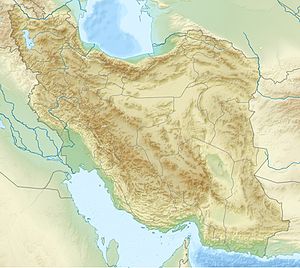| Battle of Gabiene | |||||||
|---|---|---|---|---|---|---|---|
| Part of the Second War of the Diadochi | |||||||
 Eumenes of Cardia; Late 17th century print. | |||||||
| |||||||
| Belligerents | |||||||
| Antigonus and allies | Eumenes and allies | ||||||
| Commanders and leaders | |||||||
|
Demetrius Peithon |
Eudamus Peucestas Antigenes Teutamus | ||||||
| Strength | |||||||
|
| ||||||
| Casualties and losses | |||||||
| About 5,000 | 300 | ||||||
Approximate location of the Battle of Gabiene. | |||||||
Battle of Gabiene was the second great battle [note 1] between Antigonus Monophthalmus and Eumenes, two of Alexander the Great's successors (the so-called Diadochi). The battle was fought near Gabiene in Persia in the winter of 316-315 BC and ended the Second War of the Diadochi. It established Antigonus as the most powerful of the successors.
Since the sole reference of this battle is ultimately from Eumenes' personal aide Hieronymus of Cardia (later transmitted through the historian Diodorus), who later switched his allegiance to Antigonus, he provides a unique perspective from both sides' point of view.
Cite error: There are <ref group=note> tags on this page, but the references will not show without a {{reflist|group=note}} template (see the help page).

